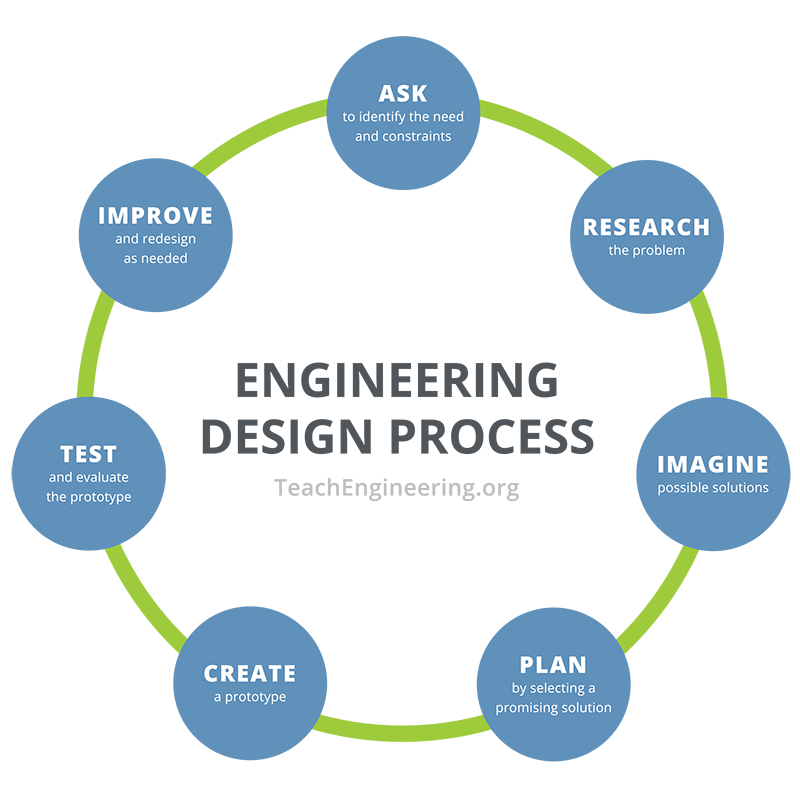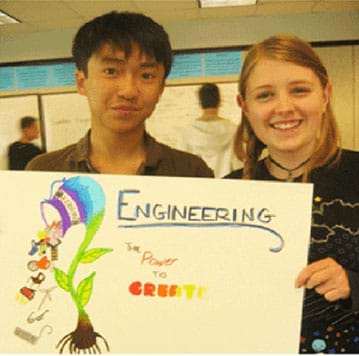
Summary
Students are introduced to the world of creative engineering product design. Through six activities, teams work through the steps of the engineering design process (or loop) by completing an actual design challenge presented in seven steps. The project challenge is left up to the teacher or class to determine; it might be one decided by the teacher, brainstormed with the class, or the example provided (to design a prosthetic arm that can perform a mechanical function). As students begin by defining the problem, they learn to recognize the need, identify a target population, relate to the project, and identify its requirements and constraints. Then they conduct research, brainstorm alternative solutions, evaluate possible solutions, create and test prototypes, and improve and redesign before manufacturing. See the Unit Schedule section for a list of example design project topics.Engineering Connection
The field of engineering is all encompassing in its subject matter and real-world challenges. Yet, engineers of all disciplines have in common certain approaches—teamwork, brainstorming, problem defining with requirements and constraints, the iterative steps of the design process, testing and analysis, prototyping, production and communication. All engineers use some form of the steps of the engineering design process to organize their ideas, and test and refine potential solutions to real-life challenges. Engineers must gain an understanding of all the contextual factors of a particular design challenge—need for the project, relevant social, ethical, environmental and economic conditions of the target population, system integration, and project needs and limitations. Working through all the technical and non-technical issues helps engineers generate useful, appropriate and successful design solutions.
Unit Overview
Students learn about the cycle of product design through six activities that follow the seven steps of a simplified engineering design process. The activity topics are: 1) identify the need and define the problem; 2) conduct background research, such as an idea web, internet patent search, standards and codes search, reverse engineering, and user interviews; 3) brainstorm and develop ideas and possible solutions; 4) evaluate alternatives and select the most promising solution using engineering analysis; 5) construct and test prototypes; and 6) improve and redesign as well as manufacture final products.

Educational Standards
Each TeachEngineering lesson or activity is correlated to one or more K-12 science,
technology, engineering or math (STEM) educational standards.
All 100,000+ K-12 STEM standards covered in TeachEngineering are collected, maintained and packaged by the Achievement Standards Network (ASN),
a project of D2L (www.achievementstandards.org).
In the ASN, standards are hierarchically structured: first by source; e.g., by state; within source by type; e.g., science or mathematics;
within type by subtype, then by grade, etc.
Each TeachEngineering lesson or activity is correlated to one or more K-12 science, technology, engineering or math (STEM) educational standards.
All 100,000+ K-12 STEM standards covered in TeachEngineering are collected, maintained and packaged by the Achievement Standards Network (ASN), a project of D2L (www.achievementstandards.org).
In the ASN, standards are hierarchically structured: first by source; e.g., by state; within source by type; e.g., science or mathematics; within type by subtype, then by grade, etc.
See individual lessons and activities for standards alignment.
Subscribe
Get the inside scoop on all things TeachEngineering such as new site features, curriculum updates, video releases, and more by signing up for our newsletter!Unit Schedule
The structure of this unit has been successfully taught to high school students by various instructors with various design challenge topics. For example, the unit has been scaled as a 13-week high school technical elective, concluding with a Design Expo attended by student families and peers, and as a high school summer camp and a high school/college bridge program, condensed into five days and five weeks, respectively.
Example design project topics taught with this unit structure include:
- house design with elements inspired by nature (biomimicry)
- assistive technology devices
- towers (tested in a university smash lab)
- amusement park rides
- daylighting modifications to existing interior spaces
- interactive table-top educational exhibits
- various solar and water technologies for use by a hypothetical developing community
Worksheets and Attachments
Visit [www.teachengineering.org/curricularunits/view/cub_creative_curricularunit] to print or download.More Curriculum Like This

Students practice the initial steps involved in an engineering design challenge. They review the steps of the engineering design loop, discuss the client need for the project, identify a relevant context, define the problem within their design teams, and examine the project's requirements and const...
Assessment
Pre/Post Unit Quiz: To conduct an overall pre/post assessment of the unit (six activities), administer the Engineering Design Quiz to the class before beginning any discussion about engineering design. Then, after completion of activity 6, administer the same quiz to the same students and compare pre- to post- scores to gauge the impact of the curricular unit on students' learning.
Other Related Information
Optional: Show students the What Is Engineering? video.
Copyright
© 2009 by Regents of the University of ColoradoContributors
See individual activitiesSupporting Program
Integrated Teaching and Learning Program, College of Engineering, University of Colorado BoulderAcknowledgements
The contents of these digital library curriculum were developed by the Integrated Teaching and Learning Program in the College of Engineering under National Science Foundation GK-12 grant no. 0338326. However, these contents do not necessarily represent the policies of the National Science Foundation and you should not assume endorsement by the federal government.
Last modified: February 25, 2020




User Comments & Tips